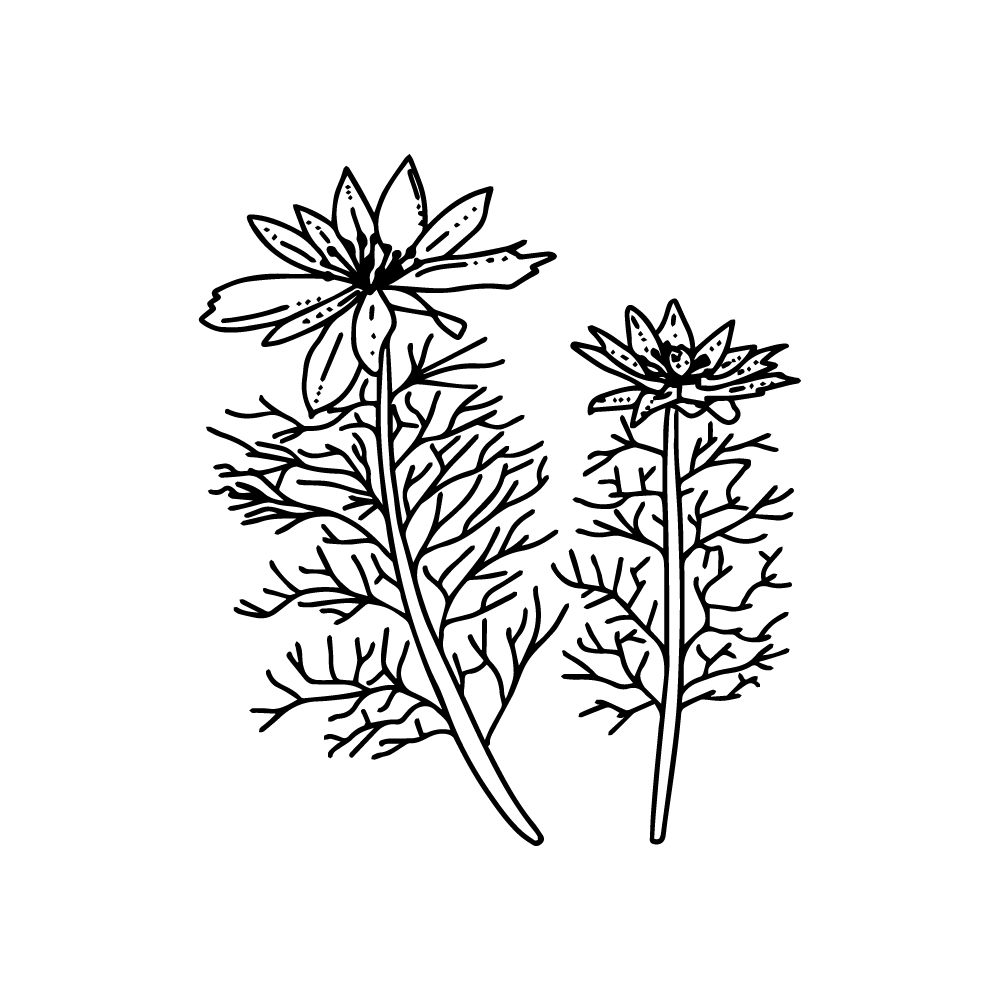Adonis Vernalis vector
Adonis vernalis L. herb vector, clip art in PNG and SVG. Adonis vernalis L. (spring adonis, perennial adonis, yellow pheasant‘s eye) herb vector, clip art catalog, transparent, no background.

Adonis vernalis L. (spring adonis, perennial adonis, yellow pheasant‘s eye)
A perennial herbaceous plant of the Ranunculaceae family. The rhizome is short, thick, brownish-grey. Stems are 3-4, grow to 40 cm after flowering, usually unbranched, smooth, brownish at the base, covered with brownish scaly leaves. Leaves 2-4 times broadly divided; lobes linear, equilateral, glabrous or slightly hairy. Flowers solitary at the tops of stems and branches, erect, large, 3-7 cm wide. The perianth is compound. Sepals broadly ovate, hairy. Petals 10-20, oblong-elliptic, slightly narrowed at the ends, entire or finely toothed, 15-40 mm long and 5-12 mm wide, pale yellow. Fruit concentric, oval, about 20 mm long and 12 mm wide. Seeds are wrinkled, with a straight or downward curved spout. Flowering April-June.
Active ingredients. The most important active substances in Spring Adonis herb are the cardiac glycosides cimarin, adonitoxin, K-trophanthin. In addition, the flavone glycoside adonivernite, 2,6-dimethoxyquinone, saponins, phytosterols, the alcohol adonite, and the coumarin vernadine are present in the roots.
Preparation. The whole aerial part of spring adonis (Adonidis vernalis herba) is used for medicinal purposes. The grass is cut at the lower leaves of the stem from the beginning of flowering until the fruit ripens. The lower part of the leafless stem is removed. Drying is carried out in the shade in a well-ventilated room, shelter or drying room at 40-50 °C. The grass, which is spread out in a thin layer, must be turned regularly. Once dried, the raw material is stored in a separate room. Suitable for use for 2 years (other sources give a consumption period of 1 year).
Usage. Spring adonis is used to treat cardiovascular diseases with chronic heart failure, cardiac neurosis, etc. The action of adonis is weaker than that of rusmene and strophanthus, but adonis does not have a strong cumulative action (does not accumulate in the body) like rusmene.
Contraindications. Spring adonis should not be used in hypertension, bradycardia, during pregnancy, in case of increased blood coagulability. The plant is used with extreme caution because it is poisonous.
Information source: https://en.wikipedia.org/wiki/Adonis_vernalis